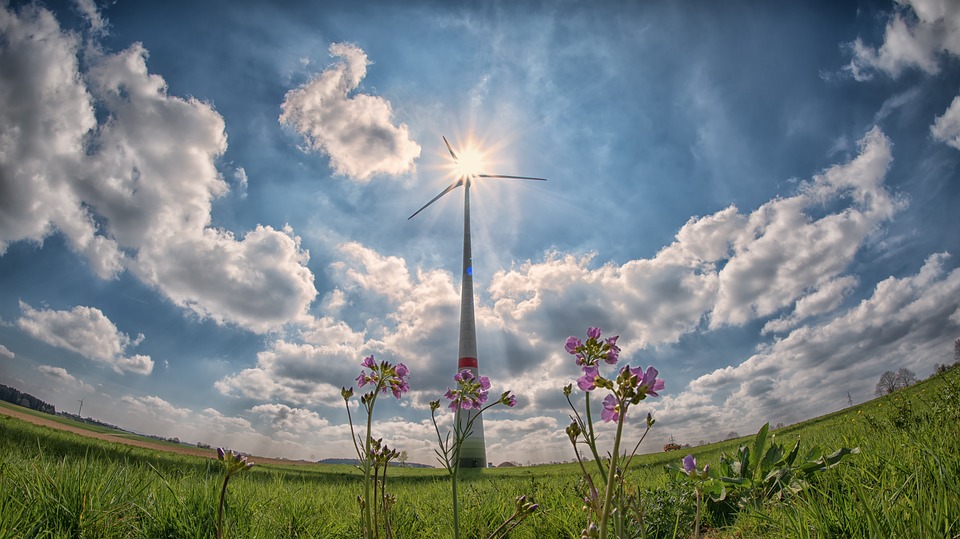Carbon is an element stored in fossil fuels such as coal and oil. When these fuels are burned, carbon dioxide is released and acts as what is term a "greenhouse gas".
Greenhouse gases are devastating to the environment and are contributors or agents of global warming.
Of course, we wouldn't want to jeopardize our collective efforts and campaigns aimed at reducing the impacts of global warming by allowing polluters pollute the environment and evade uncaught.
Businesses are therefore allocated with a specific amount of carbon they can emit annually. If they exceed the given limit, they need to purchase carbon credits or carbon offsets.
If they don’t exceed the cap, they can sell the unused carbon credits or businesses that need them.
Apparently, Carbon can be traded...
The idea behind the concept of carbon trading is quite similar to the trading of securities or commodities in a marketplace. Carbon would be given an economic value, allowing people, companies or nations to trade it.
By permitting allowances to be bought and sold, a company can seek out the most cost-effective way of reducing its emissions, either by investing in 'cleaner' machinery and practices or by purchasing emissions from another company who already has excess 'capacity'.
On the other hand, if a business has used more than what it has been allocated with, it will need to purchase a credit to be in compliance or to pay heavy fines instead.
Therefore, carbon credits could turn into a tradable asset that allows measuring a reduction in polluting greenhouse gas emissions.
Currently there are five exchanges trading in carbon allowances:
The European Climate Exchange
NASDAQ OMX Commodities Europe
PowerNext
Commodity Exchange Bratislava and
The European Energy Exchange.
WHAT IS CARBON CREDIT?
Carbon Credit is a tradable permit or certificate issued, granting the holder of the credit the right to emit a ton of Carbon dioxide.
Carbon credits are market mechanisms for the reduction of greenhouse gases emission
Regulatory authorities set caps on greenhouse gas emissions. For instance, some companies don't see any viability economically in the reduction of the emission.
Thus, such companies and allied can purchase carbon credits to comply with the emission cap. Companies that successfully offsets carbon (reduce greenhouse gas emissions) are usually rewarded with additional carbon credits.
The sale of credit surpluses may be used to subsidize future projects for the reduction of emissions.
How Much Is A Carbon Credit Worth?
According to the Carbon Fund, a carbon credit is an instrument that represents ownership of one metric tonne of carbon dioxide equivalent (using CO2 as a unit to measure different greenhouse gases) that can be traded, sold or retired.
In this way, if a business is regulated by a cap-and-trade system, it will have the benefit of allocating, trading, selling or holding a carbon credit if it managed to keep its emissions below the top limit.
The carbon trade came about in response to the Kyoto Protocol. Signed in Kyoto, Japan, in December 1997, the Kyoto Protocol calls for the 38 industrialized countries worldwide to reduce their greenhouse gas emissions between the years 2008 to 2012 to levels that are 5.2% lower than those of 1990.
The introduction of such credits was ratified in the Kyoto Protocol. The Paris Agreement validates the application of carbon credits and sets the provisions for the further facilitation of the carbon credits markets.
TYPES OF CARBON CREDITS
There are two types of Carbon credits:
1 Voluntary Emissions Reduction (VER)
2 Certified Emissions Reduction (CER)
1 Voluntary Emissions Reduction (VER): This implies a carbon offset that is exchanged in the over-the-counter or voluntary market for credits.
2 Certified Emissions Reduction (CER): This represents emission units (or credits) created through a regulatory framework with the purpose of offsetting a project’s emissions. The main difference between the two is that there is a third party certifying body that regulates the CER as opposed to the VER.
Although carbon credits are very beneficial to the triple bottom line of sustainability
Environment
Society
Economy
The certified emissions reductions (CERs) are the only product that can be used as investments in the credits. However, CERs are sold by special carbon funds established by large financial institutions. The carbon funds provide small investors with the opportunity to enter the market.
Carbon trading also known as carbon emissions trading is an innovative form of commodity trading that primarily targets the emission of Green House Gases (GHGs) or Carbon dioxide and it currently constitutes the bulk of carbon emissions trading markets worldwide.
Carbon credits can be traded on both private and public markets. Current rules of trading allow the international transfer of credits.
The prices of credits are primarily driven by the levels of supply and demand in the markets. Due to the differences in the supply and demand in different countries, the prices of the credits fluctuate.
Sequel to Carbon Credit, Carbon offset quite differ in a way...
Carbon Offsets are a simplified manner of inputting incentives on projects that generate emission reductions.
Carbon offset is created when there is a reduction in emissions from a project that have been measured into units of single metric tonnes of Carbon Dioxide equivalent.
These accrued carbon offsets can be used to offset the carbon emissions emitted by people and companies. It truly does play an amazing role in the fight against climate change.
A carbon offset is a reduction in emissions of carbon dioxide or greenhouse gases made in order to compensate for or to offset an emission made elsewhere.
Carbon offsets is not typically reliant on Carbon been offset. It can be some other greenhouse gases as seen below but measurable to Carbon as a yardstick.
Carbon offsets are measured in metric tons of Carbon Dioxide equivalent and may represent six primary categories of greenhouse gases.
The categories are;
Carbon Dioxide
Methane
Nitrous Oxide
Per FluoroCarbons (PFCs)
HydroFluoroCarbons (HFCs)
Sulphur HexaFluoride (SF6)
The Kyoto Protocol provides for three mechanisms that enable countries or operators in developed countries to acquire greenhouse gas reduction credits
a. Joint Implementation (JI) : A developed country with a relatively high costs of domestic greenhouse reduction would set up a project in another developed country.
This is aimed at reducing the emissions of greenhouse gases from the developed country.
b. Clean Development Mechanism (CDM): A developed country can 'sponsor' a greenhouse gas reduction project in a developing country where the cost of greenhouse gas reduction project activities is usually much lower.
The developed country would be given credits for meeting its emission reduction targets, while the developing country would receive the capital investment and clean technology or beneficial change in land use.
Organizations that are unable to meet their emissions quota can offset their emissions by buying CDM-approved Certified Emissions Reductions.
The market is possible because the goal of the Kyoto Protocol is to reduce emissions.
Thus, a market would be created to facilitate the buying and selling of the rights to emit greenhouse gases. The Industrialized nations could buy the emission rights from another nation whose industries do not produce as much of these gases.
c. International Emissions Trading (IET) countries can trade in the international carbon credit market to cover their shortfall in Assigned amount units.
According to the World Economic Forum, the number of permits is limited since the total amount is an attempt to match the reduction target.
During the start of the trading phase, emission licenses can either be bought at auction or offered for free to businesses. With time, the number of available licenses diminishes which puts pressure on the participating businesses thus, reducing their emissions and contributing to a cleaner production alternatives.
The Benefits Of Carbon Pricing
An outstanding benefit accruable from Carbon Pricing is a well designed strategy for reducing emissions in an effective and cost efficient way.
Market Incentives to reduce emissions from companies will in the long run, be beneficial to the Environment and Society at large.
REFERENCE




Thanks for your contribution to the STEMsocial community. Feel free to join us on discord to get to know the rest of us!
Please consider supporting our funding proposal, approving our witness (@stem.witness) or delegating to the @stemsocial account (for some ROI).
Please consider using the STEMsocial app app and including @stemsocial as a beneficiary to get a stronger support.